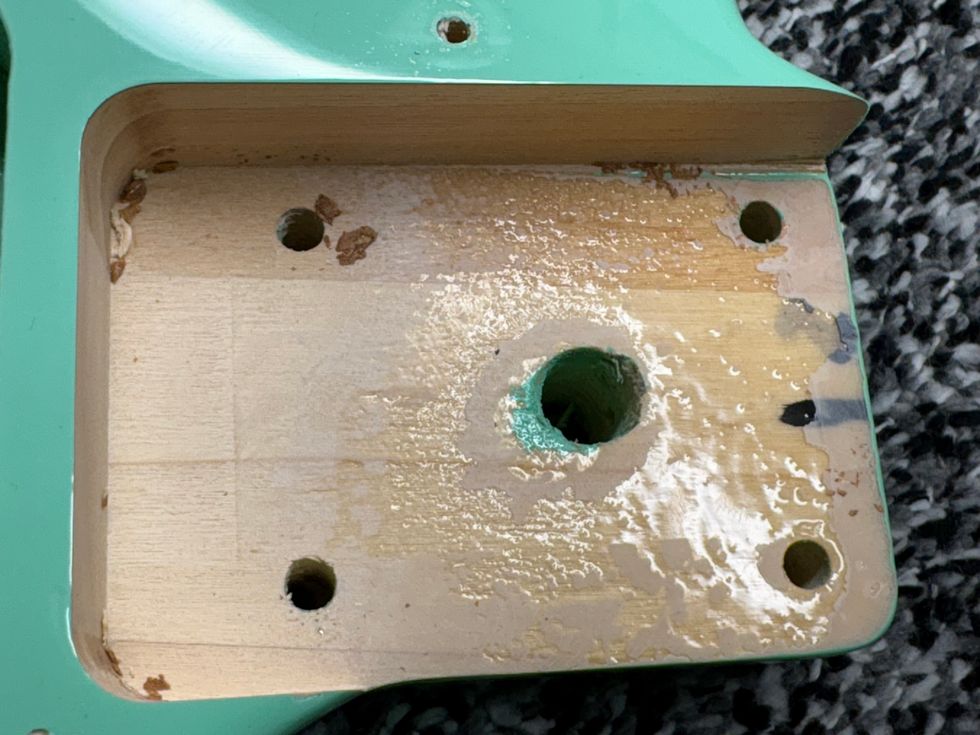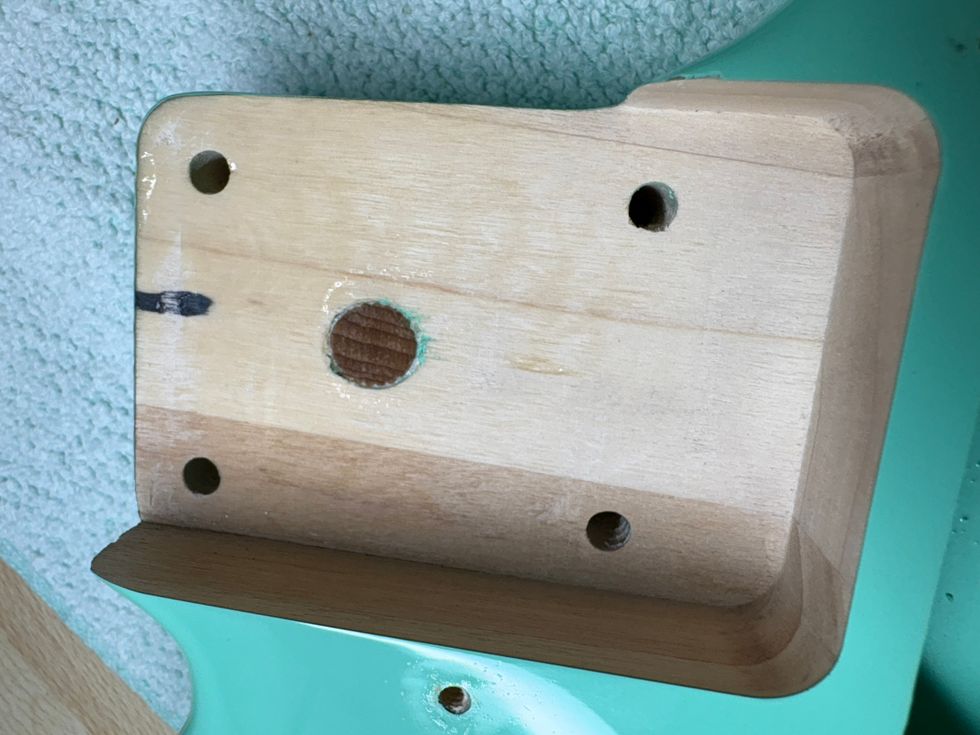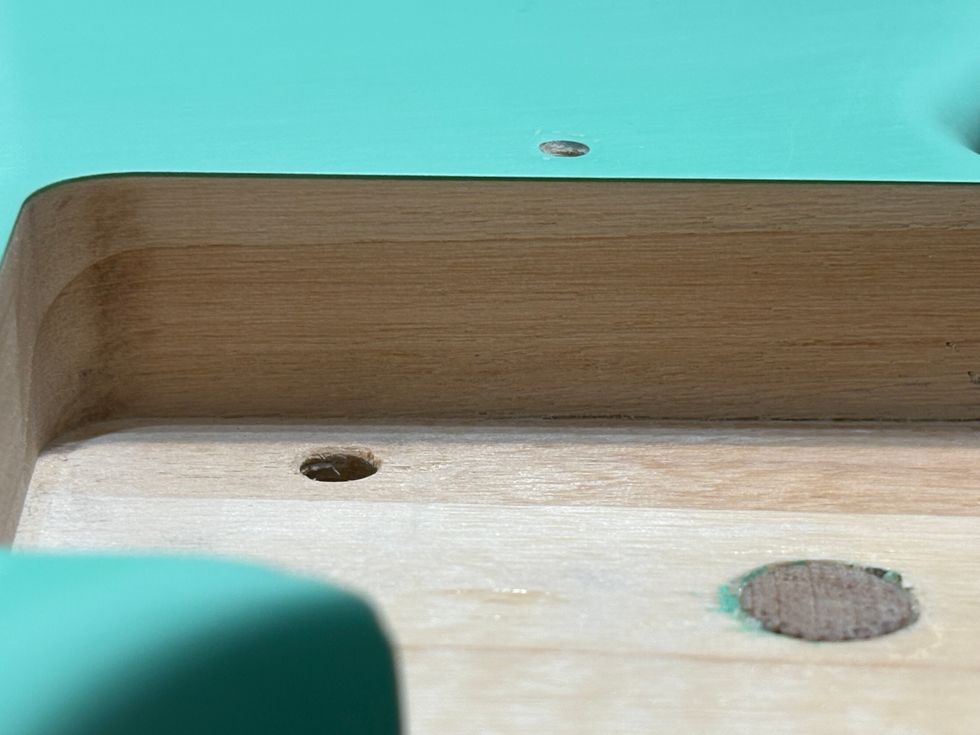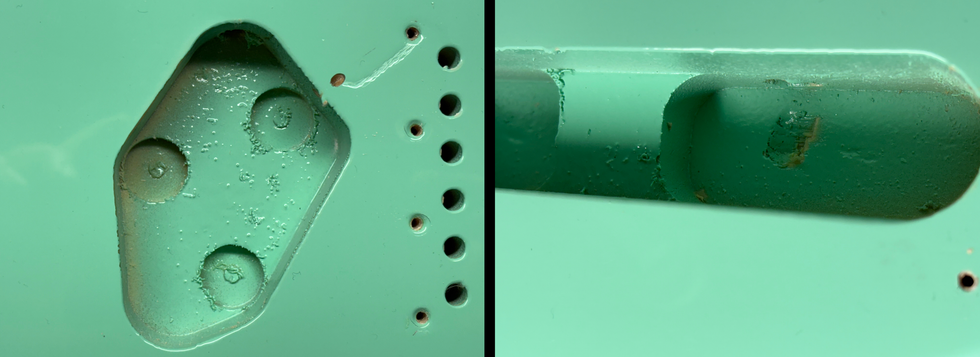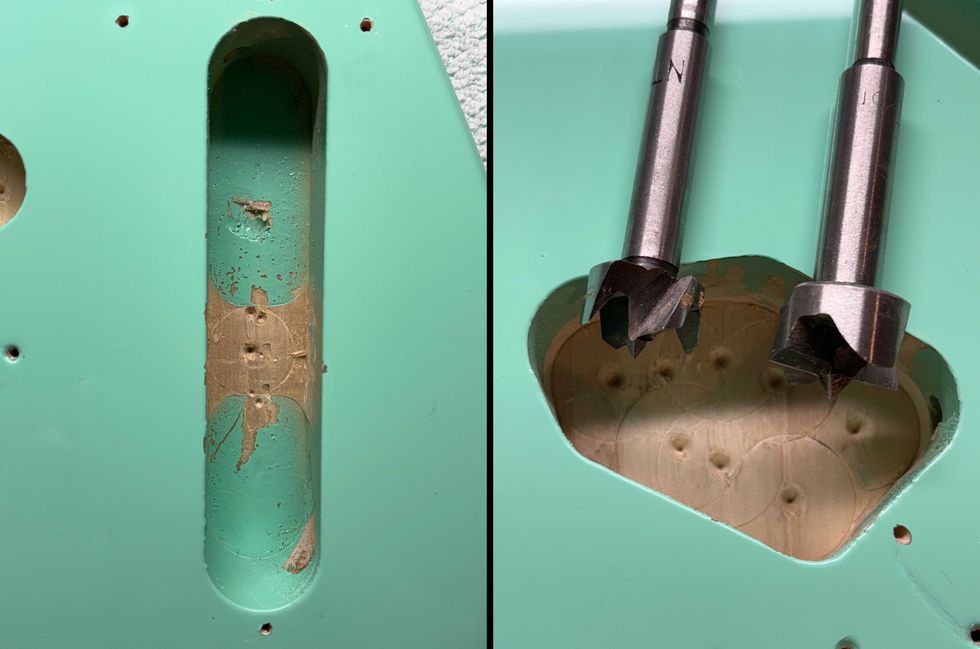Regular Mod Garage readers know that from time to time I take a break from mods and workbench tips to investigate pickup parameters. If you're an avid modder, you've likely swapped out many pickups in your guitars. When shopping for single-coils and humbuckers, it's important to understand the terms and specs you'll encounter, and what they can tell you about a given pickup and how it could perform in your guitar. As part of this journey, we've already discussed DC resistance (DCR) and phase. (If you've missed these columns, check out “Demystifying DCR" and “Get a Grip on Pickup Phase.")
Now we'll explore several “outlaw" parameters that aren't usually stated in a pickup's description. These are inductance, resonant peak, and quality factor, aka Q factor. Please bear in mind that to avoid making this discussion too confusing and complicated, I'll reduce the descriptions to the important basics. We'll explore each parameter, learn how it can be measured, and discover what it can tell us about a given pickup.
Inductance
Only a few manufacturers mention inductance in their technical pickup descriptions.Inductance (L) is measured in units of a henry (H), and it's important that the measurement occurs at a certain frequency, which for audio systems is typically 1 kHz.
Better digital multimeters (DMM) can usually measure inductance, though it's preferable for a DMM to have a range up to 20 H because some hot, overwound pickups can have an inductance of more than 10 H. If your DMM has a max range of 10 H, overwound pickups can cause a display overflow.
Measuring inductance in humbucker pickups is easy, and you usually get a steady reading. When measuring single-coils, however, you can pick up hum and noise from neon or fluorescent bulbs or their transformers, and this results in a fluctuating display reading. If that happens in our shop, I simply place the pickup inside an empty coffee can that's made from a thin sheet of iron and take the measurement again. That solves the problem! Note: The can must be magnetizable—aluminum, wood, or plastic containers will not work. Simply use a magnet to test the container.
What is inductance? In layman's terms—and related to magnetic pickups—inductance is the ability to generate current out of magnetic field change. The higher the inductance, the higher the current at the same magnetic field change.
Magnetic field change is generated by vibrating steel strings above the pickup. To put it simply: We can say that the higher the inductance, the higher the output, and together with the resonant peak (more about that in a minute), this creates the general timbre of the pickup.
The inductance can also be calculated with the number of turns and the pickup's geometry: With increasing number of turns, the inductance increases quadratically. For our purposes, it's important to remember that we have capacitance here as well, from the pickup's windings and from the guitar cable. Taken together, this gives us a formula: the lower the inductance, the higher the resonant peak. This means that the higher the inductance and the connected capacitance's values (i.e., many windings, long guitar cables), the less high end will be transferred into the system, and vice versa. This is the main reason why overwound pickups usually produce less high end.
Resonant Peak
The resonant peak is closely connected to the pickup's inductance and the so-called “external load," which is mostly determined by the guitar cable and your amp's input impedance. To this day, I've never seen pickup manufacturers list this parameter in their technical specifications, and I've always wondered why.
The resonant peak is measured in kHz, and it's not possible to measure it on the fly with a simple DMM. There are very special and super-expensive pickup analyzing tools available to measure it. It's also possible to use a measuring circuit consisting of a resistor, sine-wave generator, and an oscilloscope. This makes it possible to measure the “neutral resonant peak," and when you add external capacitance to simulate the guitar cable, you can get a very good impression of what timbre the pickup will have under real conditions. I mention this only for the sake of completeness and in case you want to dig deeper into this topic on your own.
Using a clean amp setting, it's possible to assign certain tones to different resonant frequencies. (With a distorted amp, the following general rules are no longer valid because the harmonics generated by the overdriven amp, coupled with the pickup's resonant peak, shift everything into the psycho-acoustic ballpark.) Here we go:
• Below 1 kHz: dull, hollow, muffled.
• 1.0 to 1.5 kHz: very soft, smooth, and mellow (think Clapton's Cream-era “woman tone").
• 1.5 to 2.0 kHz: warm.
• 2.0 to 2.5 kHz: singing—a typical PAF humbucker's resonant peak.
• 2.5 to 3.0 kHz: brilliant.
• 3.0 to 5.0 kHz: harsh, shrill, metallic—the resonant peak for Strat and Tele pickups.
• 5.0 to 8.0 kHz: sharp.
• 8.0 to 15.0 kHz: glass-hard, ice-picky.
• Above 15.0 kHz: neutral, colorless, lifeless.
These are only subjective observations, but I think you get the idea. And now ladies and gentlemen, my favorite topic when it comes to stirring up anarchy in the ranks of electric guitarists and pickup designers.
Quality Factor, aka Q Factor
The quality factor has nothing to do with a pickup's construction qualities. And to make things even more mind-bending, there are two different Q factors: Ql and Qr.
Ql is coil quality factor (quotient of inductance and coil resistance at a certain frequency) and Qr is resonance quality factor (dimension of the resonance superelevation related to the guitar cable and the amp).Measuring these Q factors is a challenge. It requires sophisticated equipment and knowledge of electronics and testing procedures. The theory and physics behind the Q factor is very complex, and we don't need to dip deeper into it. I only mention it for two reasons—and the first is a bit funny.
(1) The Q factor describes the width of the resonance curve at 70 percent of the resonant peak, which was crucial with vintage broadcasting equipment. The key words here are “transmitter separation" and “steep slopes," and the higher the Q, the better the transmitter separation on a radio.
In the '70s, some pickup makers, notably Bill Lawrence, started to reinterpret the Q factor in a different way to make it more applicable to pickups and, of course, add a quasi-scientific marketing touch to their products. The “70s pickup Q factor" was generated by using the quotient of the pickup's impedance at 1 kHz and the ohmic loss resistance of the pickup. Wow—that looks and sounds very impressive.
Sadly, it tells us very little—actually, almost nothing—about a given pickup. But the urban legend is still alive and will never die. A newer interpretation of the Q factor related to pickups is to use it to define the magnitude of the resonance superelevation, which is much closer to the truth (and to Qr), and this brings us to our second point.
(2) This more recent interpretation indeed tells us something about a pickup's tone, but it's not really a Q factor ... rather, it's an attempt to describe the resonance curve.
Okay, let's have a look. With rising output voltage at the resonance superelevation, the Q factor rises as well: Double output yields Q of 2, triple output yields Q of 3, and so on. Here's a rough translation: With rising Q, the pickup gets more expressive—up to a certain point. With Q between 2 and 5, our human hearing is pleased with regards to passive pickups like a PAF or a Strat single-coil. With a Q of 5 and more, the tone starts to get unpleasant, edgy and unnatural. With a Q of 2 or less, the pickup will sound shallow and expressionless.
As always, all this is subjective, and also depends on your amp settings—is it clean or overdriven? With tons of high gain on your amp, a pickup with a Q of 7 can sound great, while it would pain a jazz player using a super-clean amp setting.
All right, that's it. I hope this wasn't too theoretical and boring. I really did my best to leave out everything that isn't relevant to us guitarists. Next time we'll dive into another guitar project. Until then ... keep on modding!


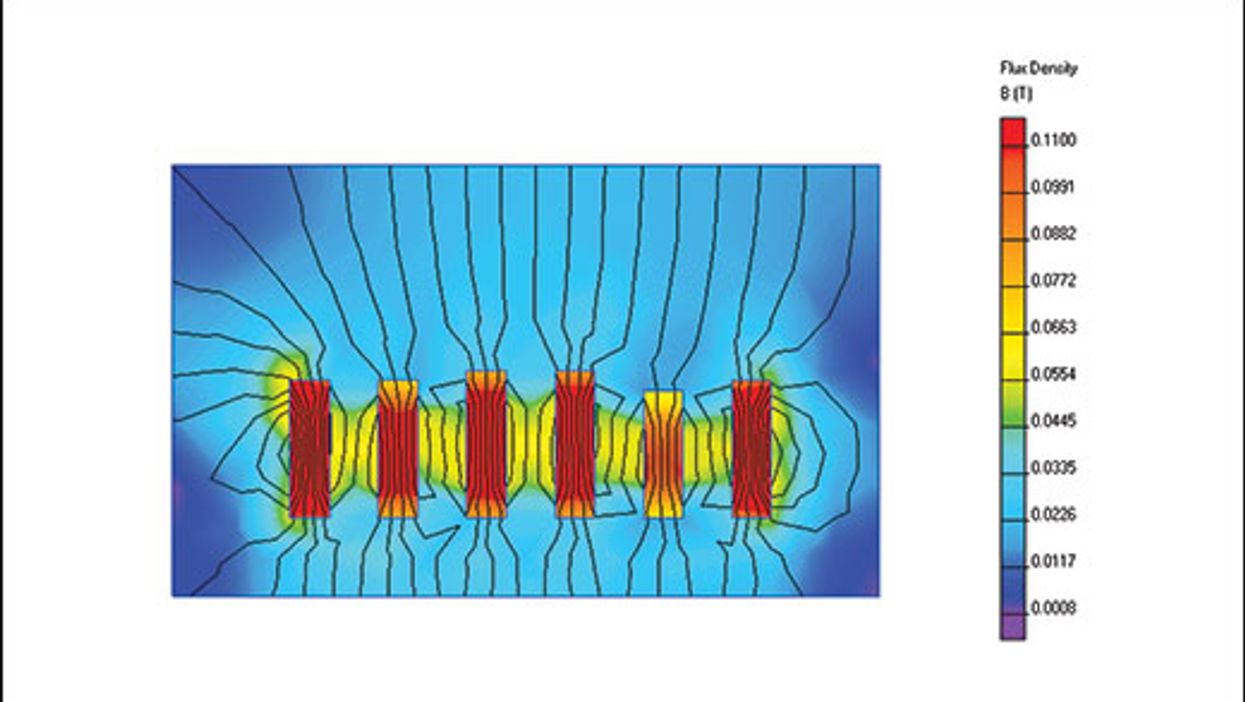

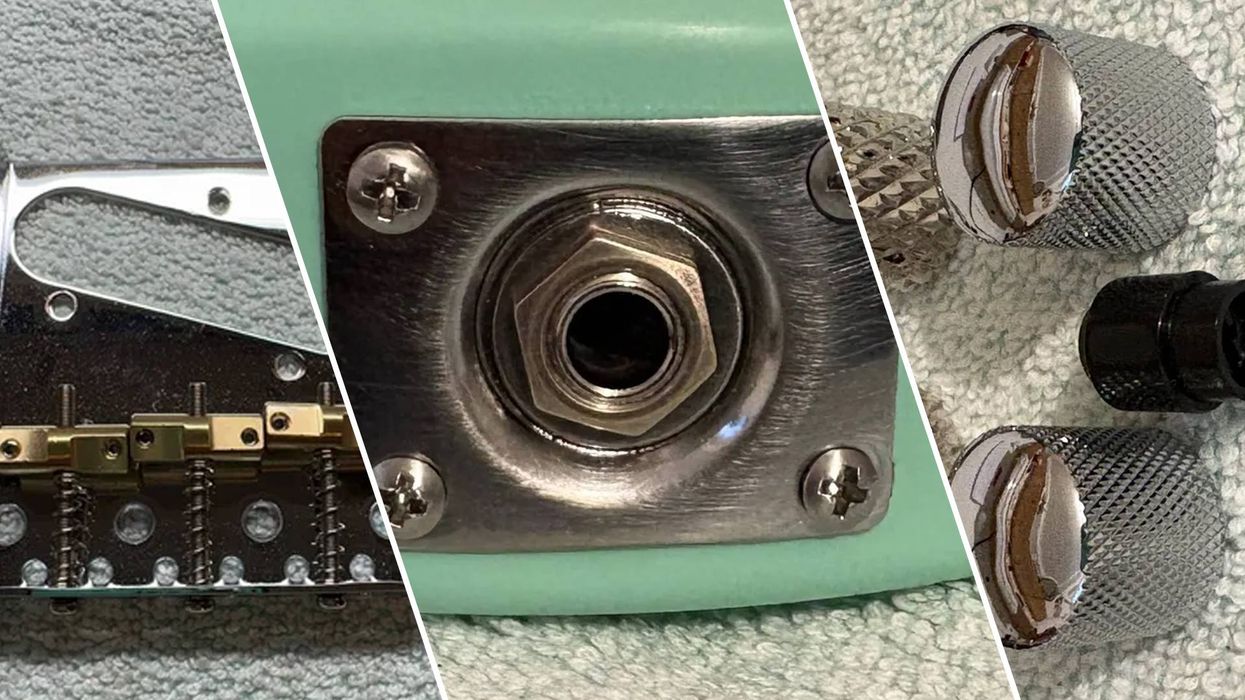












![Rig Rundown: Russian Circles’ Mike Sullivan [2025]](https://www.premierguitar.com/media-library/youtube.jpg?id=62303631&width=1245&height=700&quality=70&coordinates=0%2C0%2C0%2C0)


